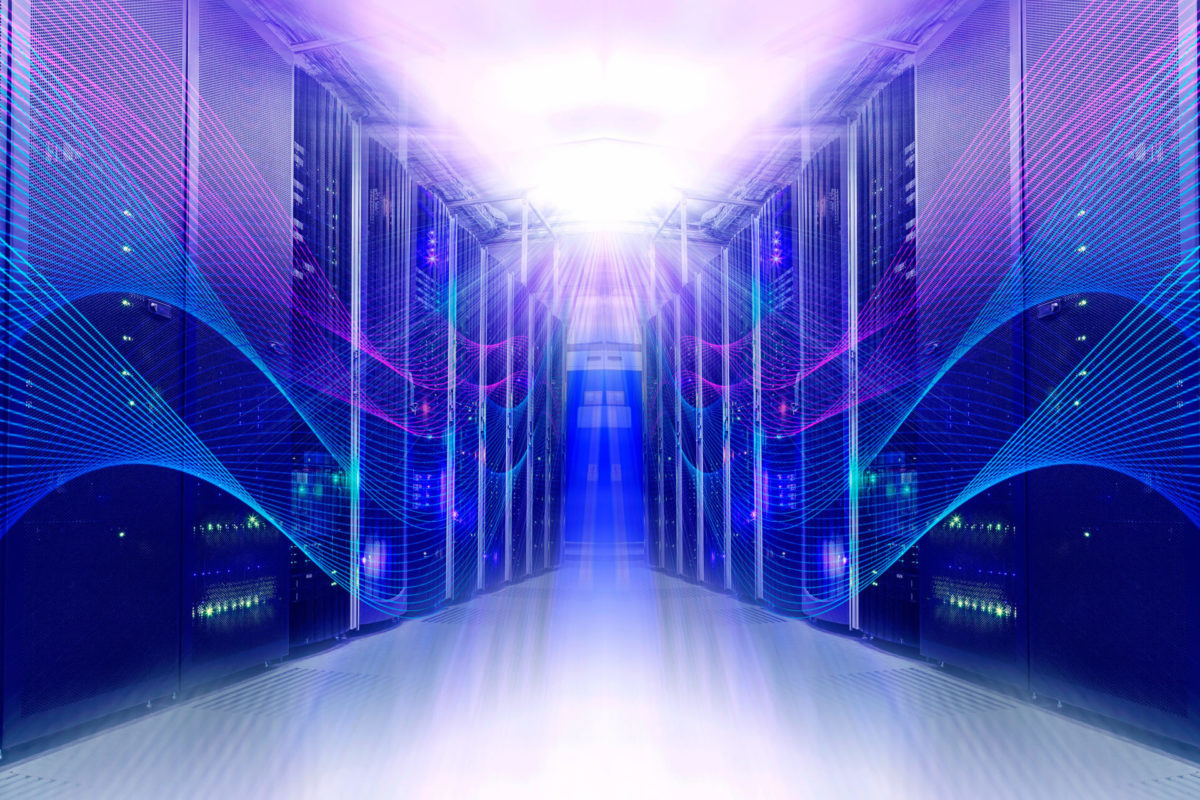Top Data Center Trends and Predictions to Watch for in 202225 min read

Opinions below have been contributed by Bill Kleyman (Switch), Lars Strong (Upsite Technologies), and Mark Acton (Independent Consultant/EkkoSense).
We’ve learned a lot from the past couple of years. Much of it has been an eye-opening experience for many organizations embracing a rapidly changing, digital world. Outside of the many pandemic-fatigue predictions out there, leaders in the data center and technology space quickly saw what works and what doesn’t to support a largely distributed business and end-user workforce. This has led to the rise of many new technologies and processes for organizations of all shapes and sizes. As we move forward, our industry is serving as the backbone to the digital change required by these new technologies and processes, and we can expect even more change and innovation to occur in the coming year.
The metaverse and the data center. Changes in how we manage our data centers are happening. Many of these changes include new sensors, data points, and even smarter technologies all aimed at helping us make better decisions around critical infrastructure. Already we’re seeing how digital twin solutions are impacting infrastructure management. We’re seeing how live modeling can impact real-time decisions, and where architects and engineers can work on a digital twin to make design and cooling decisions. These are not static images of a virtual data center; instead, they are sensor and data-driven models of actual data center halls. We take the data center into the metaverse by creating data-driven models of living data centers in digital format. This means our ability to deploy, manage, architect, and support next-generation digital infrastructure facilities will be empowered by augmented and virtual reality solutions, driven by things like digital twin modeling.
A resurgence of interest in DCIM but with a movement away from legacy products. Historically, DCIM has become a toxic term to many and something of catchall for very different technologies and solutions. As a result, the DCIM space has been very confused and poorly defined with very limited demonstrable ROI in most cases. This is changing though. The pandemic has demonstrated the need for effective infrastructure management tools capable of operating remotely, as has the increasing need for accurate energy efficiency and sustainability reporting and management. The growing emergence of Edge sites has reinforced this need so that interest has grown in tools offering genuine management capabilities, rather than merely monitoring or alerting, and that can also demonstrate a true ROI. The expectations of a true DCIM solution and the features it should incorporate will become increasingly well defined.
A huge focus on ESG.A rising tide floats all boats. In this sense, the rising tide is sustainability, and all the boats are your shareholders and the environment. But what does it have to do with ESG and data centers? Given the importance of ESG to customers and investors, sustainable data center practices are also good business. Often, data centers built and managed with the most robust set of ESG practices in place will have a distinct competitive advantage over those with less focus on sustainability. Research shows that this is because the cost savings generated from lower energy consumption or the use of renewables can be directly passed on to customers through lower pricing. Further, if data center leaders follow robust ESG policies and align with market standards, they will benefit from increased tenant attraction and retention as they demonstrate results from these partnerships.
An increasing focus on sustainability and genuine energy efficiency with an increasing recognition that PUE alone is neither an appropriate or accurate energy efficiency or sustainability metric. The sector is becoming increasingly aware of ‘greenwashing’ and starting to reinforce genuine energy saving and sustainability practices which will accelerate during 2022.
Nuclear-powered data centers. As a major focus around sustainability, there are emerging initiatives around small nuclear reactors, known as small modular reactors (SMRs). One leader in this space is Rolls-Royce. They’re offering small nuclear reactors to US-based cloud operators so their hyperscale data centers can have net-zero emissions. Deploying one of these SMRs also means they become independent of the electric grid. Small modular reactors (SMRs) are under development by a consortium led by Rolls-Royce, and could potentially power data centers or other infrastructure that needs a steady supply of low-carbon energy, which may not be available from the local electricity grid. Furthermore, at this year’s AFCOM Data Center World 2022 conference, the Department of Energy alongside capital investment firms will be presenting a workshop on how these solutions can shift the sustainability conversation for data center operators. This is the first time we’re having these conversations on such a scale.
A recovery in live in-person data center events and conferences as Covid restrictions are lifted and travel becomes easier. We can all hopefully look forward to meeting up face to face again and reconnecting with friends and colleagues in the sector during 2022.
Global supply chain issues will continue to be a problem during 2022. There are evidently issues generally leading to shortages of semiconductors and components etc. and this is compounded in the data center sector by the huge upsurge in construction and development within the sector. Much of this is due to Tier 2 and 3 markets opening up based on the recognition of the importance of Data Sovereignty and also access to large populations that are currently underserved in many regions.
Supply-chain creativity (from just in time, to just in case). We’ve been seeing supply-chain challenges for some time. More recently, they’re impacting the supply of critical data center components and hindering enterprise IT projects. A recent report from the Uptime Institute states that the pandemic, extreme weather, and political instability have all disrupted global supply chains of late. This is forecasted to continue, with restricted supplies of certain types of key components, including chips, power electronics, and even electrical equipment. Now, here’s an official sneak peek into the very latest AFCOM State of the Data Center Report survey results. One in four respondents indicated that supply chain shortages resulted in an outage or downtime in their facility. This is the first time we’ve asked this question and were taken aback by some of the results. Data center leaders will need to work more closely with their partners to ensure that supply chain constraints don’t take down critical infrastructure.
The furious M&A and investment activity seen in the second half of 2021 will continue for at least the 1st half of 2022, leading to increasing sector consolidation throughout the year. A quick look at the deals that have been completed already during the first weeks of January highlights this trend. Expect more significant announcements this year.
Gen Z’s in the data center. The latest findings from the AFCOM State of the Data Center Report indicate two very interesting findings. First, the median age of the typical data center professional has gone down. And, nearly 70% of respondents are saying that they’re seeing Gen Z enter the data center industry. This is really great news for everyone. One thing we’re seeing is how colleges, universities, and technical schools are now offering specific courses and even degrees around data centers and digital infrastructure. The cool part here is that computer engineers, electrical engineers, and even architects can all become introduced into our industry much earlier in their careers than ever before. To get in front of this, work with your local schools and universities to get great candidates. Similarly, great organizations like the Infrastructure Masons are actively working with a number of schools to create data center-focused capstone projects.
We’ve learned a lot from the past couple of years. Much of it has been an eye-opening experience for many organizations embracing a rapidly changing, digital world. Outside of the many pandemic-fatigue predictions out there, leaders in the data center and technology space quickly saw what works and what doesn’t to support a largely distributed business and end-user workforce. This has led to the rise of many new technologies and processes for organizations of all shapes and sizes. As we move forward, our industry is serving as the backbone to the digital change required by these new technologies and processes, and we can expect even more change and innovation to occur in the coming year.
- The metaverse and the data center. Changes in how we manage our data centers are happening. Many of these changes include new sensors, data points, and even smarter technologies all aimed at helping us make better decisions around critical infrastructure. Already we’re seeing how digital twin solutions are impacting infrastructure management. We’re seeing how live modeling can impact real-time decisions, and where architects and engineers can work on a digital twin to make design and cooling decisions. These are not static images of a virtual data center; instead, they are sensor and data-driven models of actual data center halls. We take the data center into the metaverse by creating data-driven models of living data centers in digital format. This means our ability to deploy, manage, architect, and support next-generation digital infrastructure facilities will be empowered by augmented and virtual reality solutions, driven by things like digital twin modeling.
- A resurgence of interest in DCIM but with a movement away from legacy products. Historically, DCIM has become a toxic term to many and something of catchall for very different technologies and solutions. As a result, the DCIM space has been very confused and poorly defined with very limited demonstrable ROI in most cases. This is changing though. The pandemic has demonstrated the need for effective infrastructure management tools capable of operating remotely, as has the increasing need for accurate energy efficiency and sustainability reporting and management. The growing emergence of Edge sites has reinforced this need so that interest has grown in tools offering genuine management capabilities, rather than merely monitoring or alerting, and that can also demonstrate a true ROI. The expectations of a true DCIM solution and the features it should incorporate will become increasingly well defined.
- A huge focus on ESG. A rising tide floats all boats. In this sense, the rising tide is sustainability, and all the boats are your shareholders and the environment. But what does it have to do with ESG and data centers? Given the importance of ESG to customers and investors, sustainable data center practices are also good business. Often, data centers built and managed with the most robust set of ESG practices in place will have a distinct competitive advantage over those with less focus on sustainability. Research shows that this is because the cost savings generated from lower energy consumption or the use of renewables can be directly passed on to customers through lower pricing. Further, if data center leaders follow robust ESG policies and align with market standards, they will benefit from increased tenant attraction and retention as they demonstrate results from these partnerships.
- An increasing focus on sustainability and genuine energy efficiency with an increasing recognition that PUE alone is neither an appropriate or accurate energy efficiency or sustainability metric. The sector is becoming increasingly aware of ‘greenwashing’ and starting to reinforce genuine energy saving and sustainability practices which will accelerate during 2022.
- Nuclear-powered data centers. As a major focus around sustainability, there are emerging initiatives around small nuclear reactors, known as small modular reactors (SMRs). One leader in this space is Rolls-Royce. They’re offering small nuclear reactors to US-based cloud operators so their hyperscale data centers can have net-zero emissions. Deploying one of these SMRs also means they become independent of the electric grid. Small modular reactors (SMRs) are under development by a consortium led by Rolls-Royce, and could potentially power data centers or other infrastructure that needs a steady supply of low-carbon energy, which may not be available from the local electricity grid. Furthermore, at this year’s AFCOM Data Center World 2022 conference, the Department of Energy alongside capital investment firms will be presenting a workshop on how these solutions can shift the sustainability conversation for data center operators. This is the first time we’re having these conversations on such a scale.
- A recovery in live in-person data center events and conferences as Covid restrictions are lifted and travel becomes easier. We can all hopefully look forward to meeting up face to face again and reconnecting with friends and colleagues in the sector during 2022.
- Global supply chain issues will continue to be a problem during 2022. There are evidently issues generally leading to shortages of semiconductors and components etc. and this is compounded in the data center sector by the huge upsurge in construction and development within the sector. Much of this is due to Tier 2 and 3 markets opening up based on the recognition of the importance of Data Sovereignty and also access to large populations that are currently underserved in many regions.
- Supply-chain creativity (from just in time, to just in case). We’ve been seeing supply-chain challenges for some time. More recently, they’re impacting the supply of critical data center components and hindering enterprise IT projects. A recent report from the Uptime Institute states that the pandemic, extreme weather, and political instability have all disrupted global supply chains of late. This is forecasted to continue, with restricted supplies of certain types of key components, including chips, power electronics, and even electrical equipment. Now, here’s an official sneak peek into the very latest AFCOM State of the Data Center Report survey results. One in four respondents indicated that supply chain shortages resulted in an outage or downtime in their facility. This is the first time we’ve asked this question and were taken aback by some of the results. Data center leaders will need to work more closely with their partners to ensure that supply chain constraints don’t take down critical infrastructure.
- The furious M&A and investment activity seen in the second half of 2021 will continue for at least the 1st half of 2022, leading to increasing sector consolidation throughout the year. A quick look at the deals that have been completed already during the first weeks of January highlights this trend. Expect more significant announcements this year.
- Gen Z’s in the data center. The latest findings from the AFCOM State of the Data Center Report indicate two very interesting findings. First, the median age of the typical data center professional has gone down. And, nearly 70% of respondents are saying that they’re seeing Gen Z enter the data center industry. This is really great news for everyone. One thing we’re seeing is how colleges, universities, and technical schools are now offering specific courses and even degrees around data centers and digital infrastructure. The cool part here is that computer engineers, electrical engineers, and even architects can all become introduced into our industry much earlier in their careers than ever before. To get in front of this, work with your local schools and universities to get great candidates. Similarly, great organizations like the Infrastructure Masons are actively working with a number of schools to create data center-focused capstone projects.
Authors:

Bill Kleyman
Executive Vice President of Digital Solutions, Switch

Lars Strong
P.E., Senior Engineer and Company Science Officer, Upsite Technologies

Mark Acton
Independent Consultant, Non Executive Director, EkkoSense
Real-time monitoring, data-driven optimization.
Immersive software, innovative sensors and expert thermal services to monitor,
manage, and maximize the power and cooling infrastructure for critical
data center environments.
Real-time monitoring, data-driven optimization.
Immersive software, innovative sensors and expert thermal services to monitor, manage, and maximize the power and cooling infrastructure for critical data center environments.







0 Comments